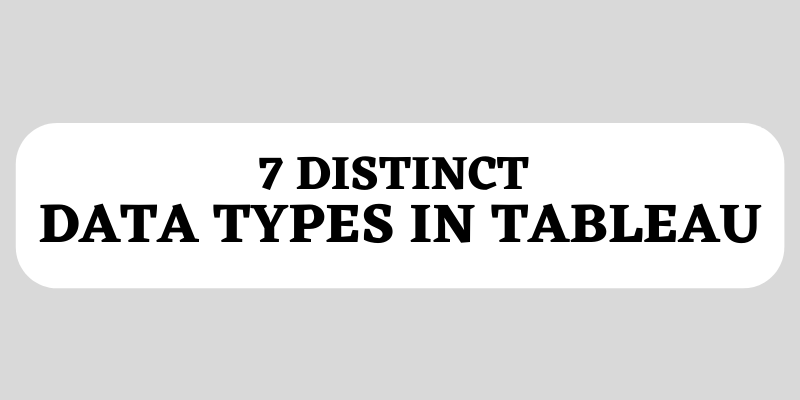Introduction
Data types in Tableau provide details about the data types and information that can place in the data source.
In Tableau, there are seven distinct types of data. Value types include string, date, date and time, number, boolean, geographic, cluster, and mixed values.
- String Values
Char
Varchar
- Date Values
- Date & Time Values
- Numeric Values
- Boolean Values
- Geographical Values
- Cluster or Mixed Values
- Data Type icons in Tableau
To learn more about Data Types in Tableau, join Tableau Training in Chennai at FITA Academy for the best training.
Let’s briefly look into each of them:
Data Type for Strings Text Data type
- To enclose characters, use single or double quotations.
- There are two sorts of string values:
– Varchar and Char.
Data Type for Char
- If you enter a value that is more than the predefined limit, an error message will appear.
- alpha-numeric values are saved
Varchar Type of Data
- Variable character is referred to as Varchar.
- The string’s length is adjustable, so you can enter as many values as you like.
- alpha-numeric values are saved
Data Type for Date and Date & Time
- Tableau supports all date formats, including mm-dd-yyyy and dd-mm-yyyy.
- An extension of the Date data type is the Date and time data type.
- Seconds, minutes, hours, days, months, years, decades, and other time units are all possible.
- Add the # symbol before the date value if you want to add it as a string. For instance: # 11 March 2022
Tableau Online Course will enhance your learning of more concepts about Tableau.
Numeric Data Types
- Numerical values may either be:
- – An integer Integer Floating: 10, -5, 0
- Decimal floating values: 2.536, 0.6667, and -3.14
- Since it becomes challenging to add more decimal points at a certain point, integer values are preferred over floating-point numbers.
- To round the float values, use Round().
Type of Boolean Data
- True or False are the two logical values for boolean data types.
- Additionally, 1 and 0 use to denote True and False, respectively.
- Is profit larger than zero, for instance?
- “Yes” or “No” just
- It is convertes to a boolean computation in the tableau:
- SUMIFS([Profit]) > 0
Type of Geographical Data
- In Maps Associates, data values use for each value in a field having a latitude and longitude value.
- includes elements such the postal code, region, city, state, and nation, among others.
Mixed or Clustered Data Types
- The data type can determine by Tableau, but occasionally the data field doesn’t match the data type.
- Analyzing the data is a challenge when using mixed values.
- Making a different column that doesn’t include the mixed values will cure this issue.
Conclusion
In this blog, we discussed a wide variety of data in Tableau, such as string, integer, date, date & time, Boolean, geographic, and mixed data types.
I hope this blog will be helpful to you as you come up with your data analyst career.
To learn more about Tableau Frameorks, join Tableau Training in Chennai for the best training and 100% placement assistance.
